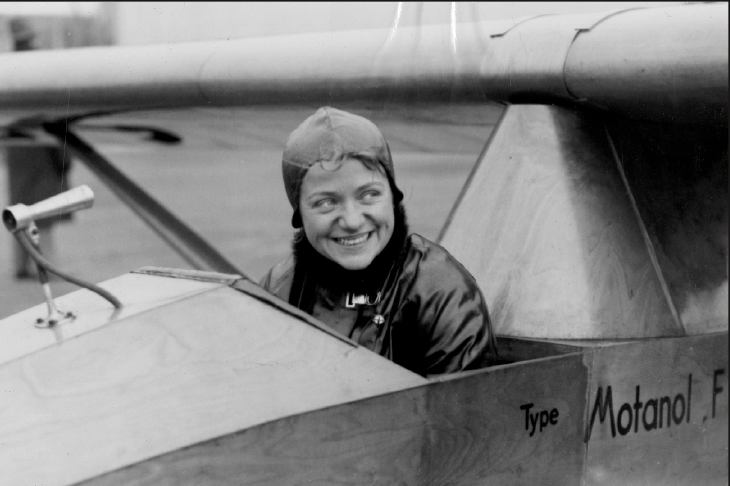It is conventional wisdom in the publishing industry that, despite the old adage, readers do indeed judge books by their covers. So, it seems, do passengers on the No. 29 bus. For a middle-aged man reading Clare Mulley’s The Women Who Flew for Hitler, some of the looks I got made me so uncomfortable that I took to hiding the cover behind a newspaper.
So let’s get one thing straight from the beginning: this is not a niche book for Third Reich enthusiasts, nor a seedy excuse to fantasise about women in Nazi uniforms. Do not be put off by the awful title: it is in fact a serious double biography of two of the most remarkable women in the history of aviation.
The first of Mulley’s subjects, and the more famous of the two, is Hanna Reitsch. Reitsch was the darling of the prewar German press and one of the most gifted fliers of her generation. At the age of 21, this extraordinary woman flew a glider through storm clouds to set a new world altitude record for unpowered flight. In 1937 she became the first woman ever to fly a helicopter, and during the second world war she flew every plane going, including manned versions of the V-1 flying bomb.
Her physical courage seemed to know no bounds. In 1942, she crashed in a jet plane prototype she was testing; but despite breaking her back in several places, and having her nose torn from her face, she was back flying again within a year. She was the first German woman to be made a Flight Captain, the first to receive the Military Flying Medal, and the first to receive the Iron Cross, First Class. ‘She was the one and only Hanna Reitsch,’ as one of her male colleagues put it, ‘a symbol of German womanhood and the idol of German aviation.








Comments
Join the debate for just £1 a month
Be part of the conversation with other Spectator readers by getting your first three months for £3.
UNLOCK ACCESS Just £1 a monthAlready a subscriber? Log in